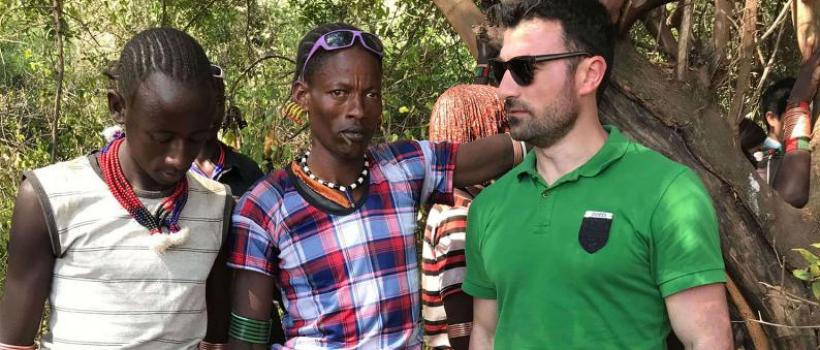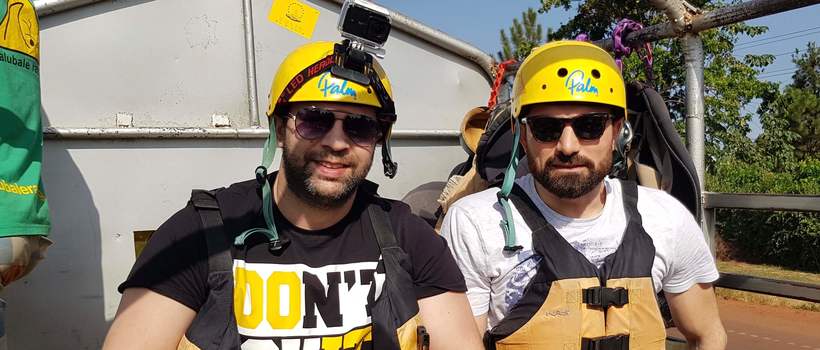They are considered to be the most fashionable and beautiful inhabitants of Africa - Hamar tribe
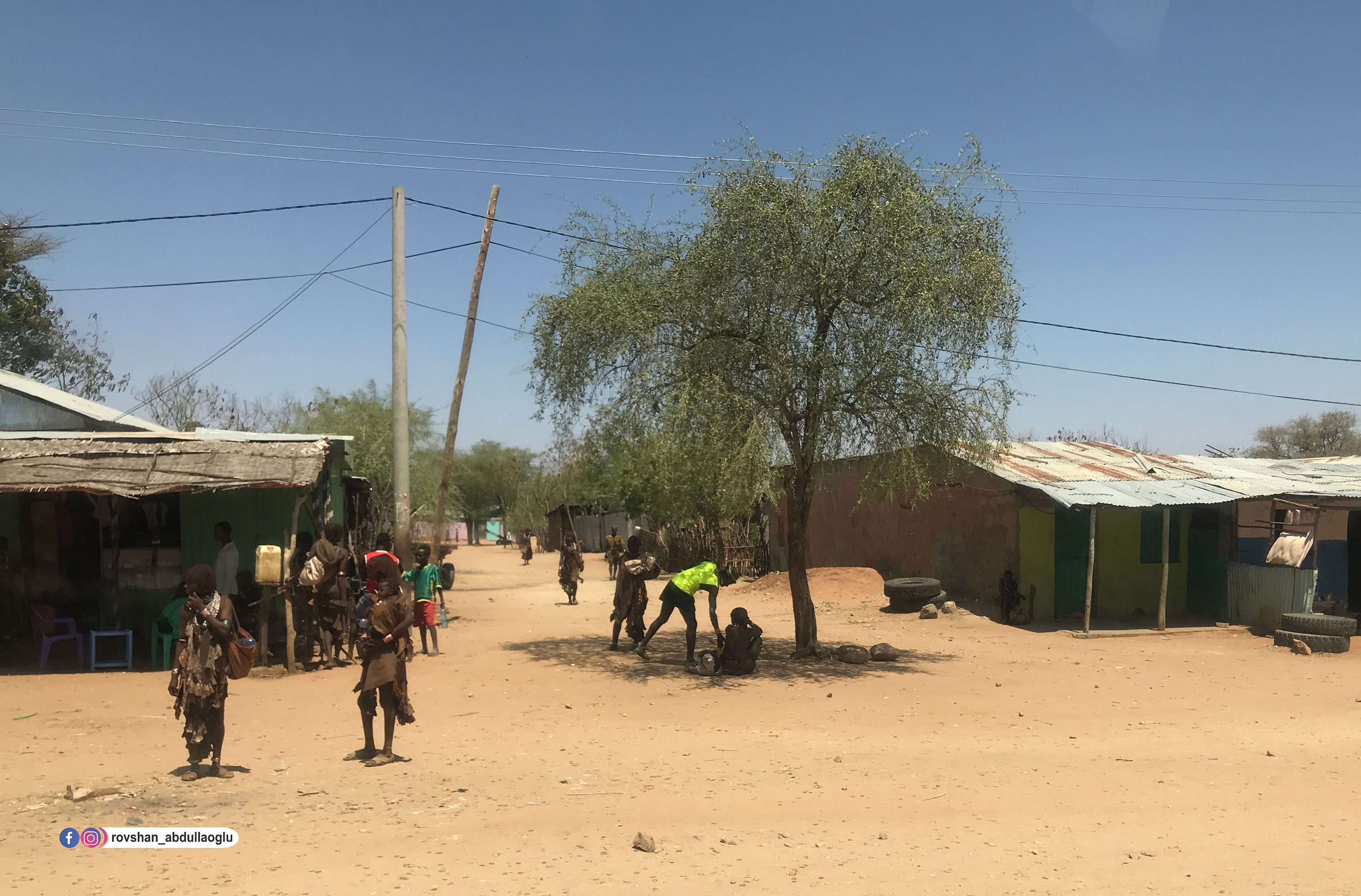
In order to get get acquainted with the Hamar tribe living in the valley of the Omo River, we first came to Turmi station since village of Hamar is very close to here. Generally, they come to the Omo Valley from two points. Either from Ya Arba - 500 km south of the capital, or from Cinka. The second way is longer. We chose the latter and flew from Addis Ababa to Cinca and from there we came to Turmi by car.
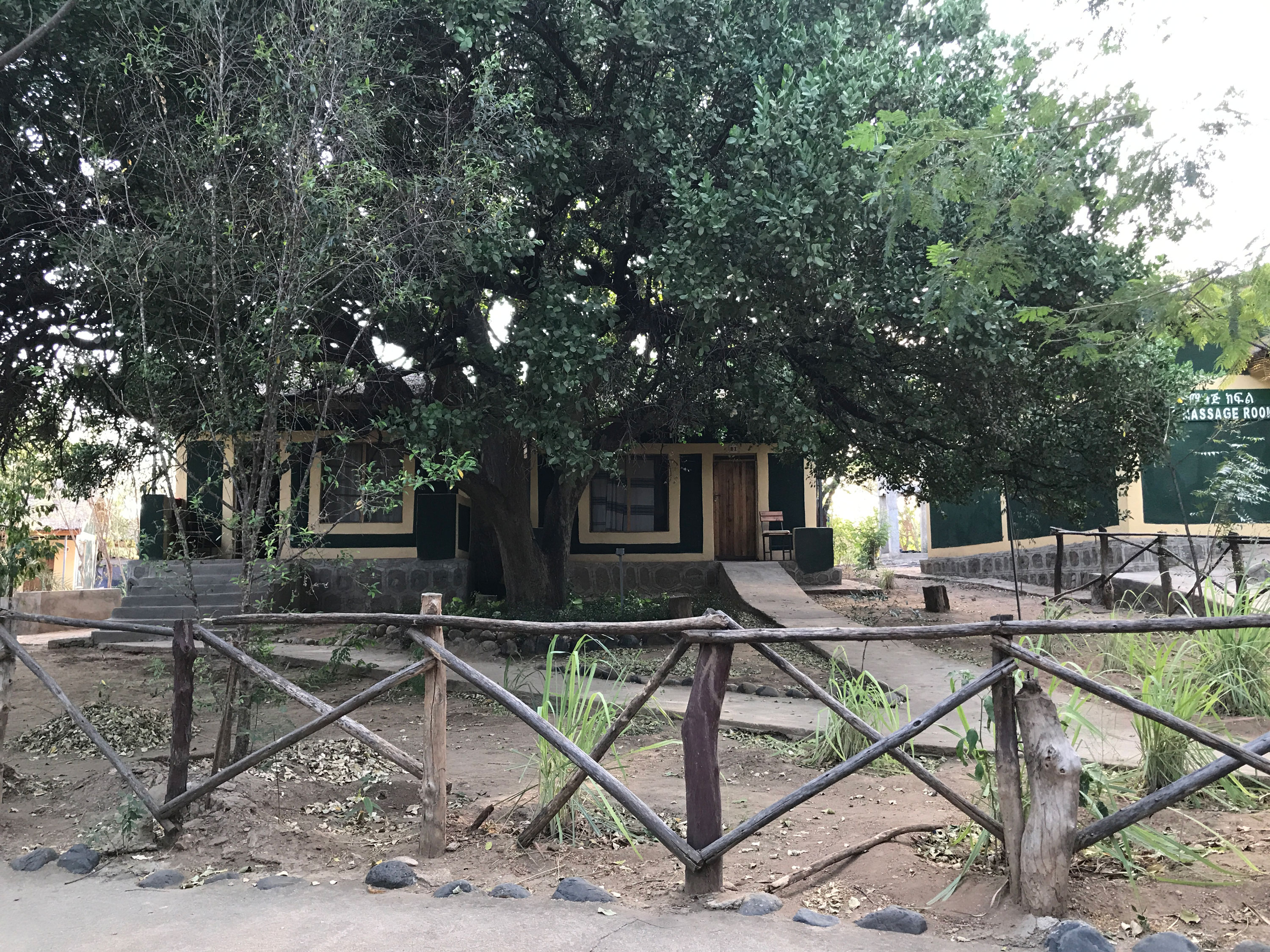
This is the place where we stayed in the town of Turmi. It was the only respectable place that we could find in order to spend the night in this area. They use a generator because there is no electricity. It is stopped as soon as night falls, all the lights go out. There were almost only foreigners left in this lodge. Bloggers from different countries, travelers, representatives of TV channels or any organization in Africa...
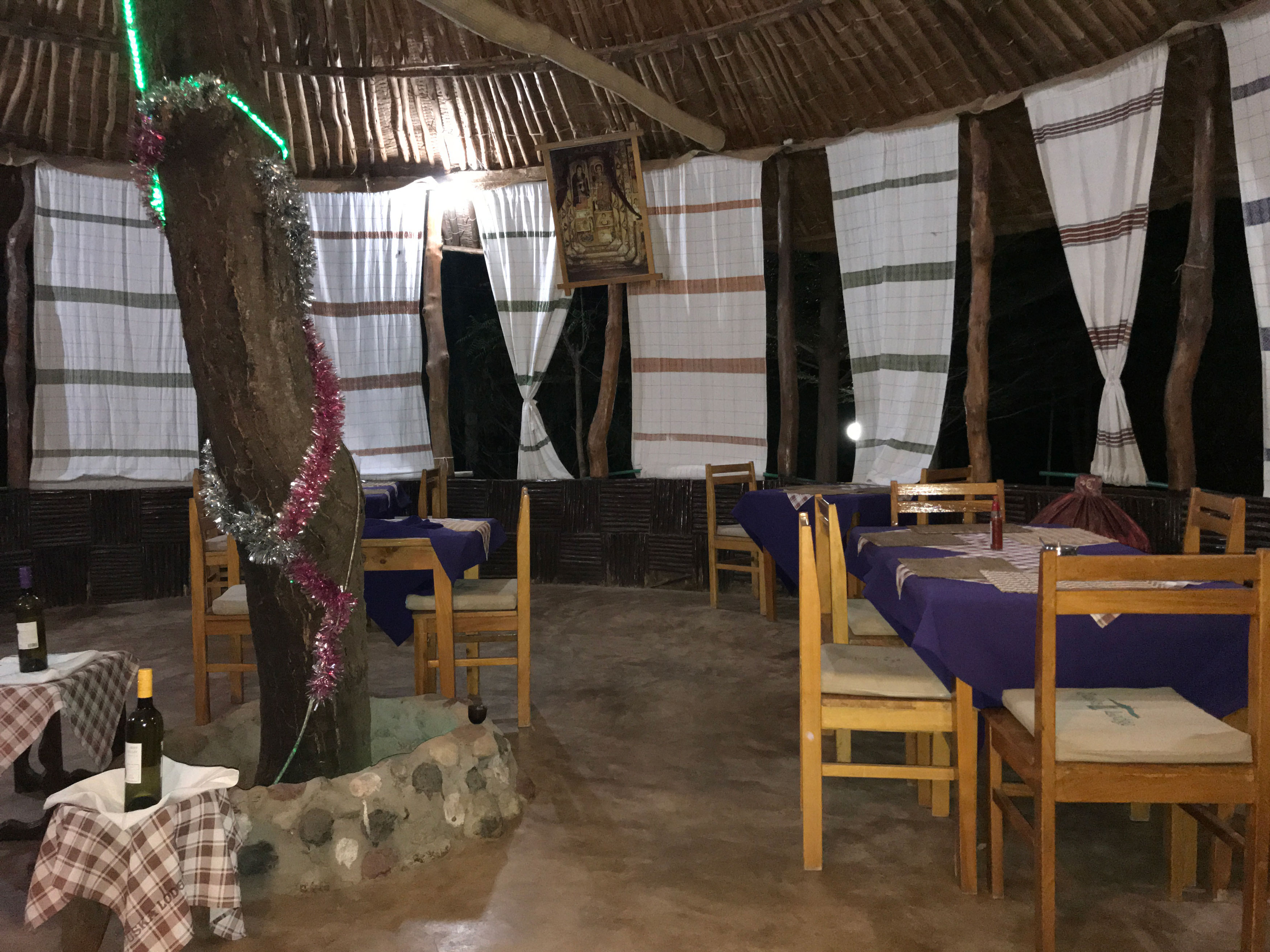
This is the only restaurant in the lodge. We ate canned food we brought with us to the restaurant. As in most public places, smoking is prohibited in the restaurant yard.
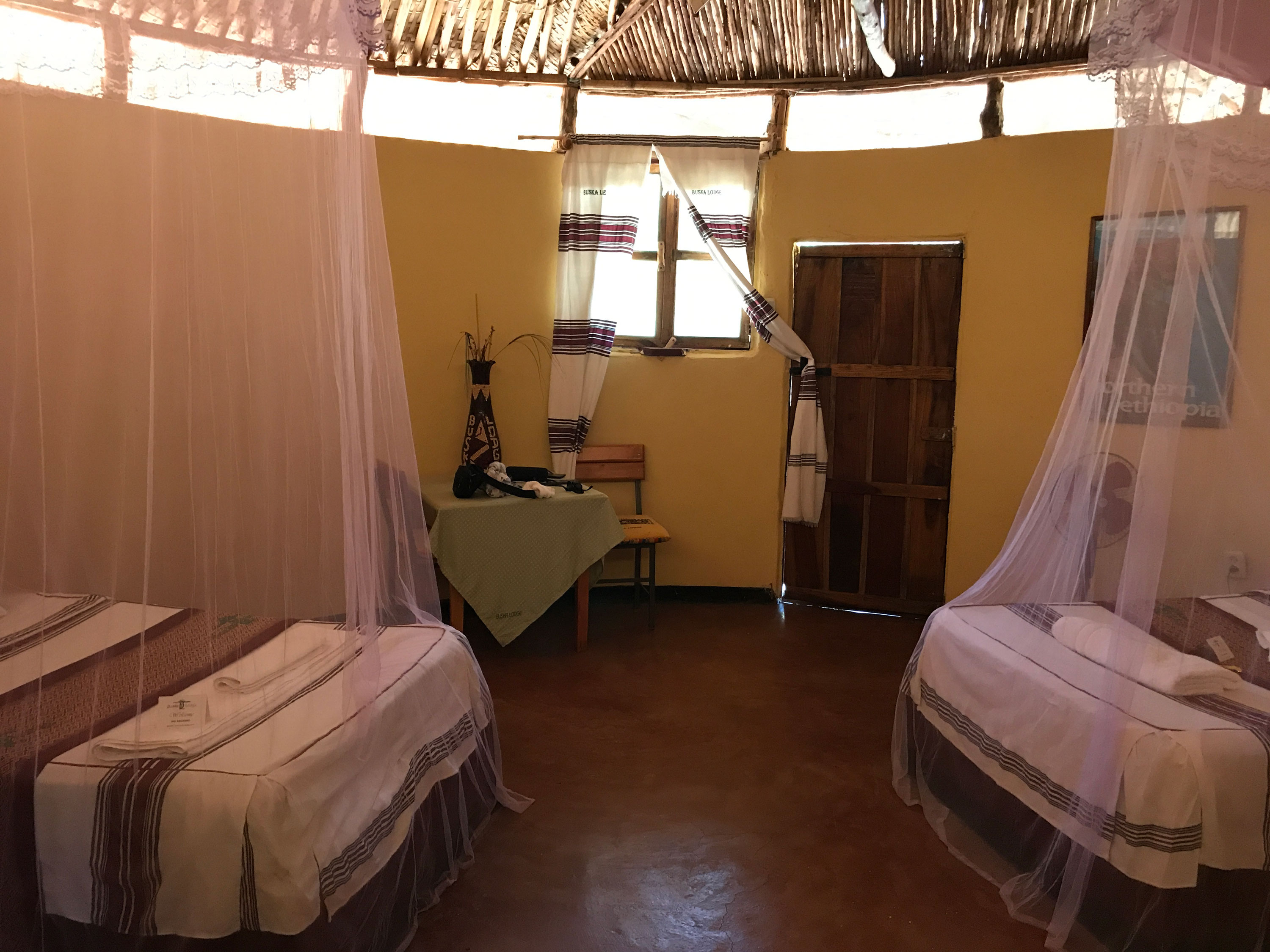
This the room we stayed in. When we left, we locked the door of the room with a small lock that we usually use to lock the doors the roof. No one is responsible for lost property. The beds also have a mosquito net to protect them from mosquitoes. It is dangerous to spend the night here without bed curtains. The bites of various insects and bugs sometimes lead to deadly diseases.
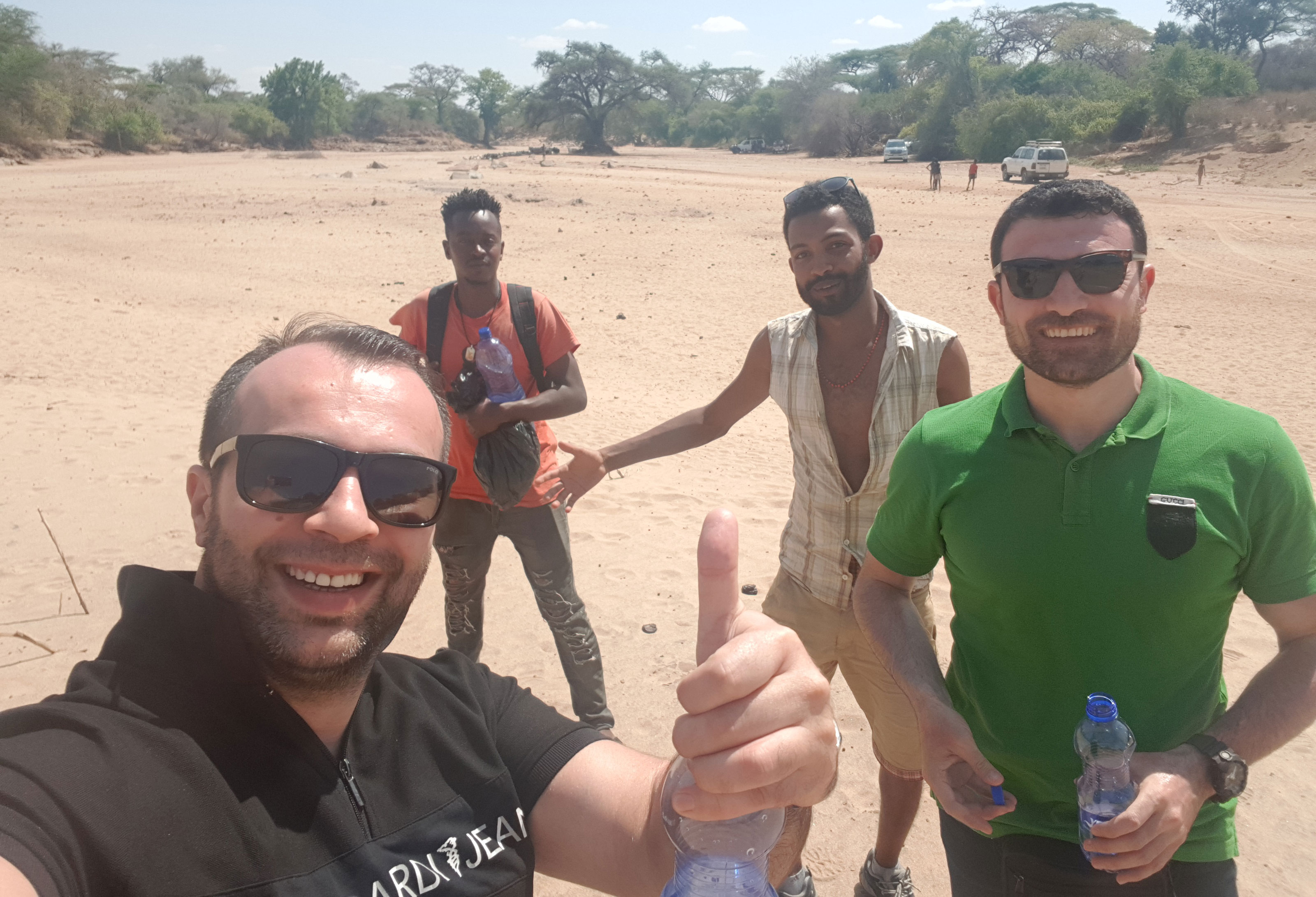
Those behind us are Gino and Babi. Gino is a youth from Hamar tribe. He is behind Elvin. He moved to the city and has been away from the village for a long time. He speaks English to some extent. We entered the Hamar tribe under his guidance. Babi is behind me. Babi was our general guide throughout all of southern Ethiopia, the Omo Valley. However, Babi's presence was not enough to enter the villages where the tribes lived. As he entered each village, Babi invited a local guide he knew.
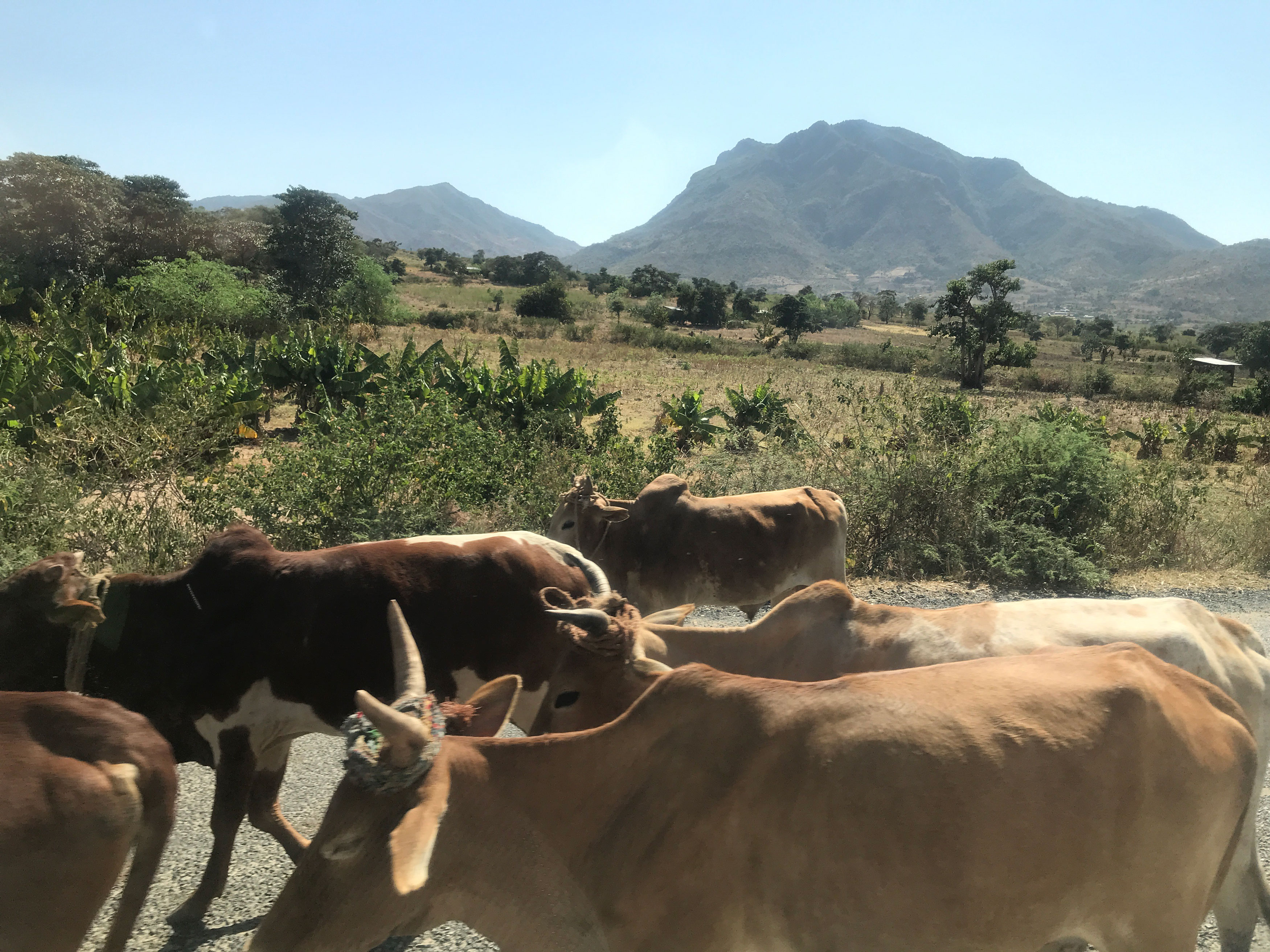
The Hamar tribe lives on the southern shores of the Omo Valley. The area where they live is very large, covered with sparse shrubs and weak trees. Because the land belongs to the whole tribe, not to anyone, who can have his or her animals graze comfortably. Hamars used to hunt wild boars and antelopes, but now they had to move from hunting to livestock with the decline of animals. I have not seen a single wild boar or antelope in this area. Shepherds are usually armed. This is a precaution against attacks by other tribes, raids and wild animals.
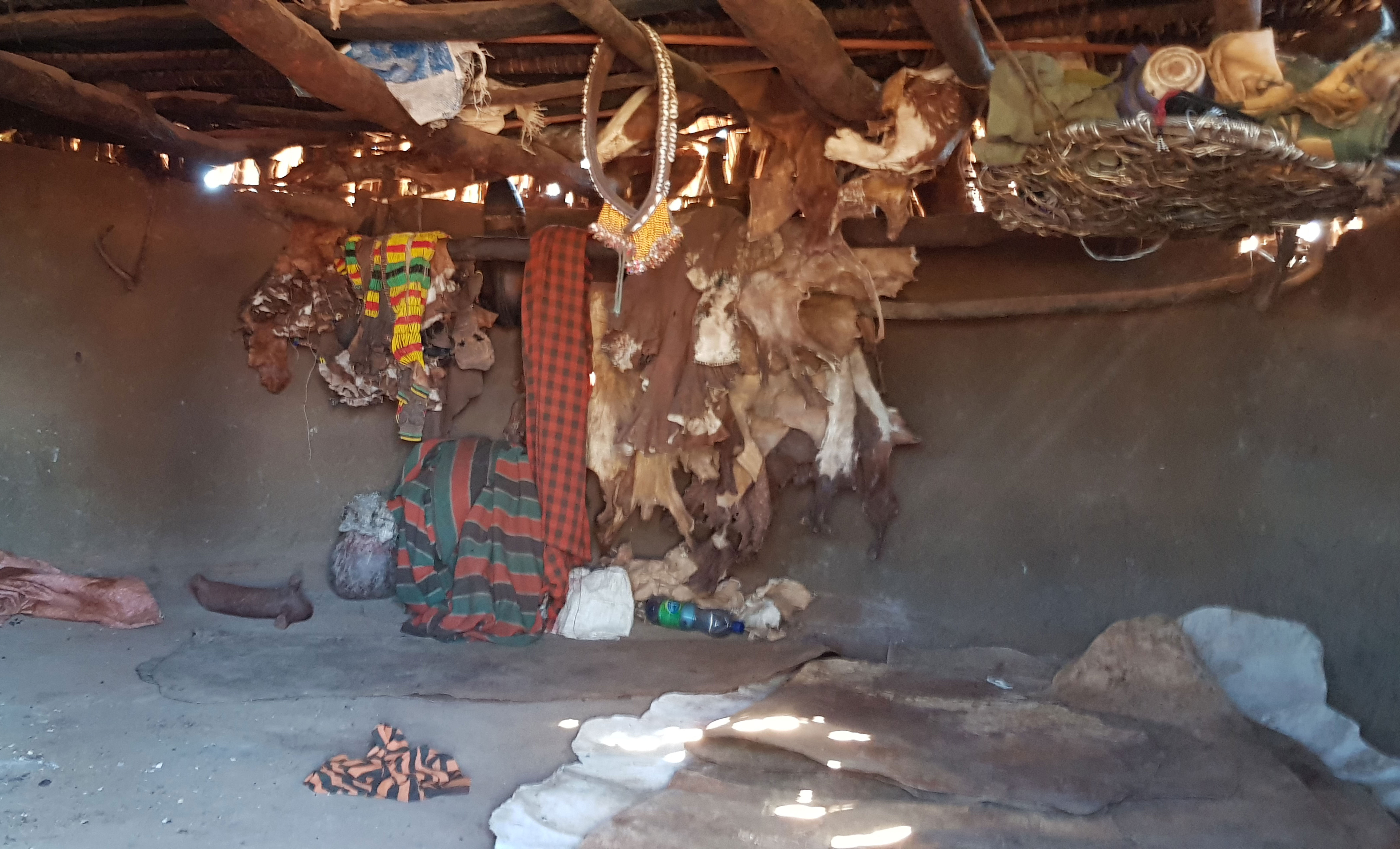
Hamars can change places for more fertile soils. It is not difficult to move to another place because they do not own a large property. The houses of Hamars. It is full of animal skins because they are cattle breeders. Sometimes they bring the animal in the house. Here they both eat and sleep. There is nothing more in the house, but the most necessary things.
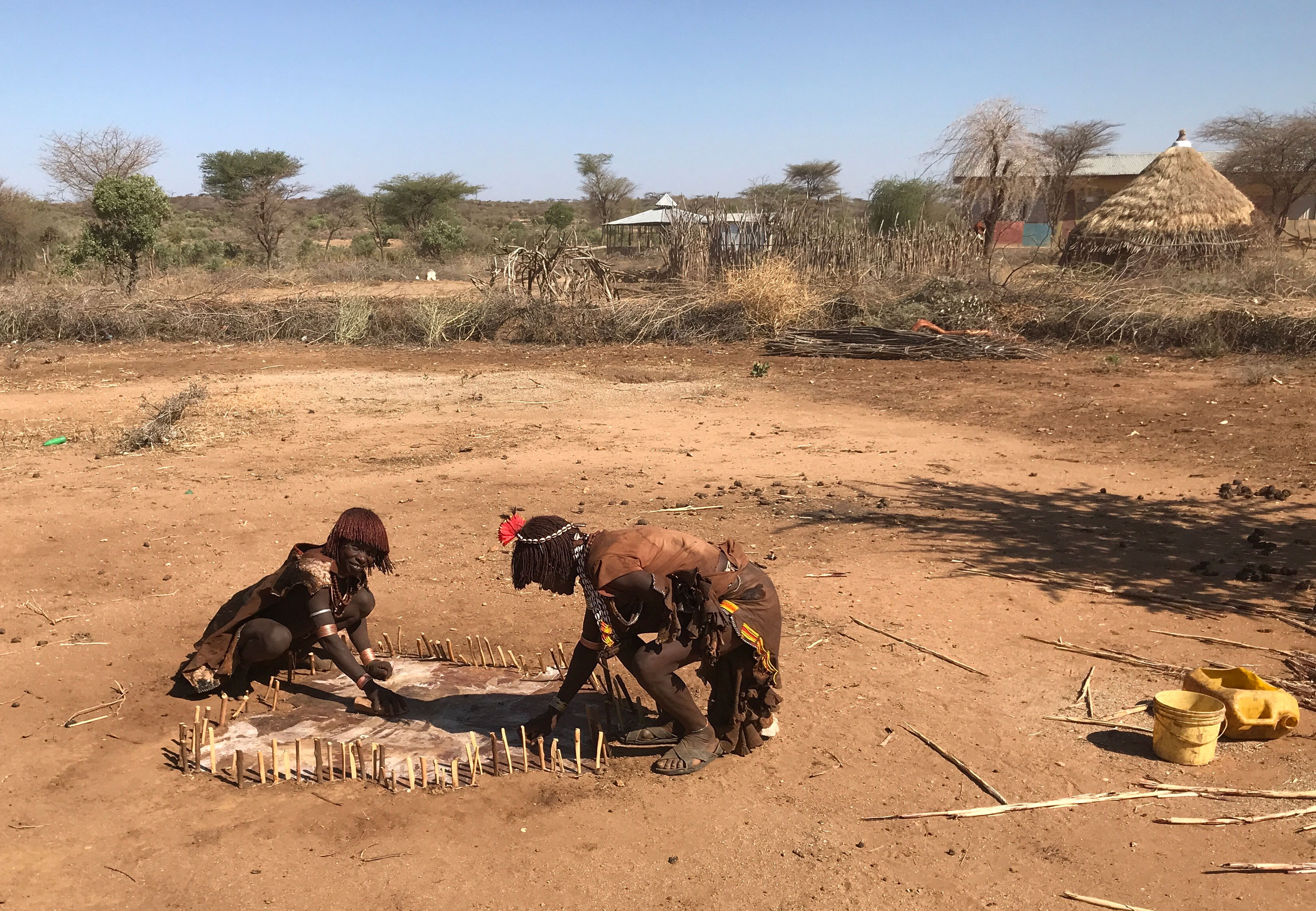
Ladies tanning animal skin.
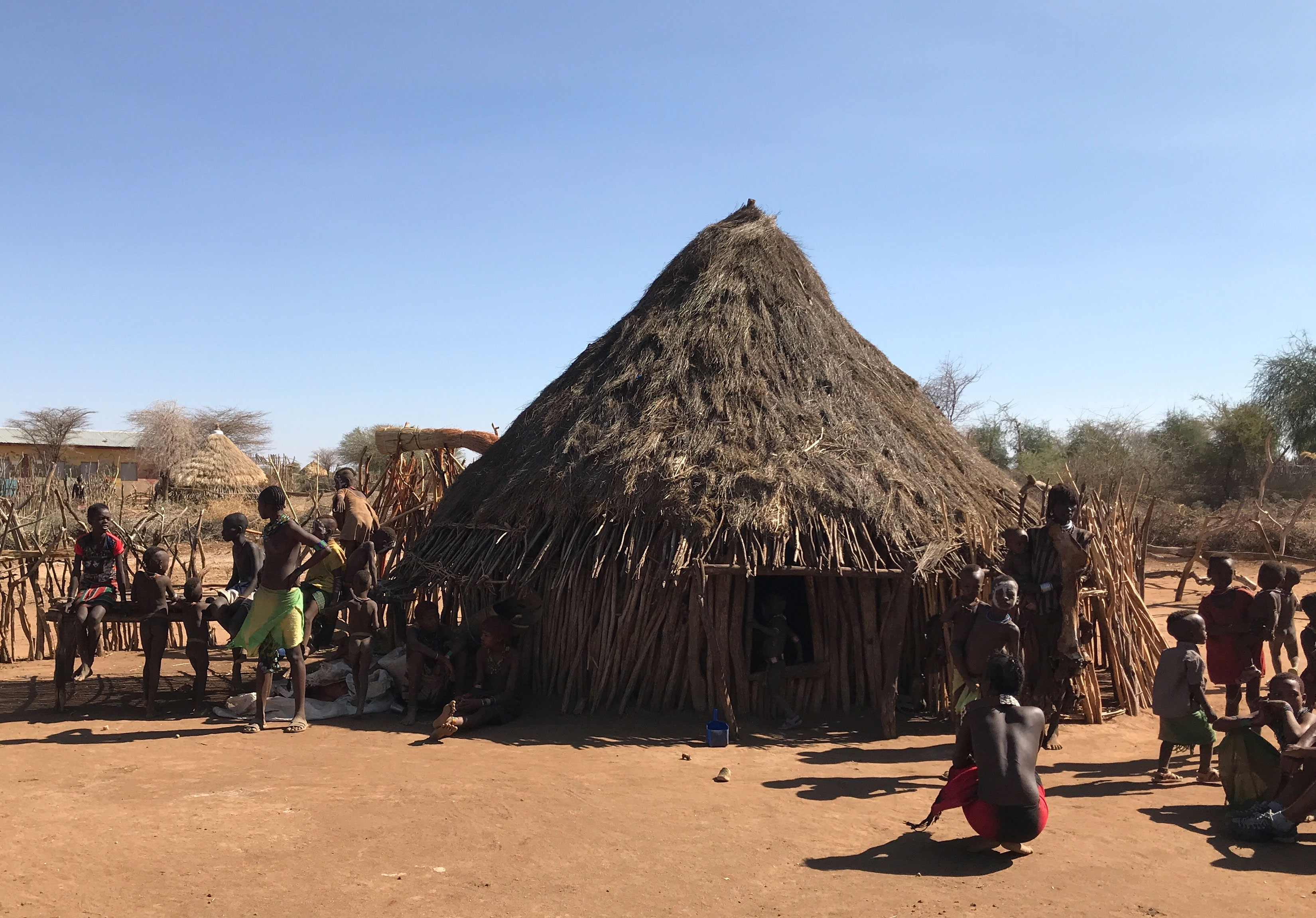
It cannot be said that food rations are colorful. Honey, butter, cheese, dairy products are widely used. Dishes with meat are rarely cooked because the animals are usually kept for more milk. The dishes are mostly in the form of porridge. The whole village gathers at night to drink the drink they make themselves, and then they all start dancing. They live a carefree life, unaware of a different world.
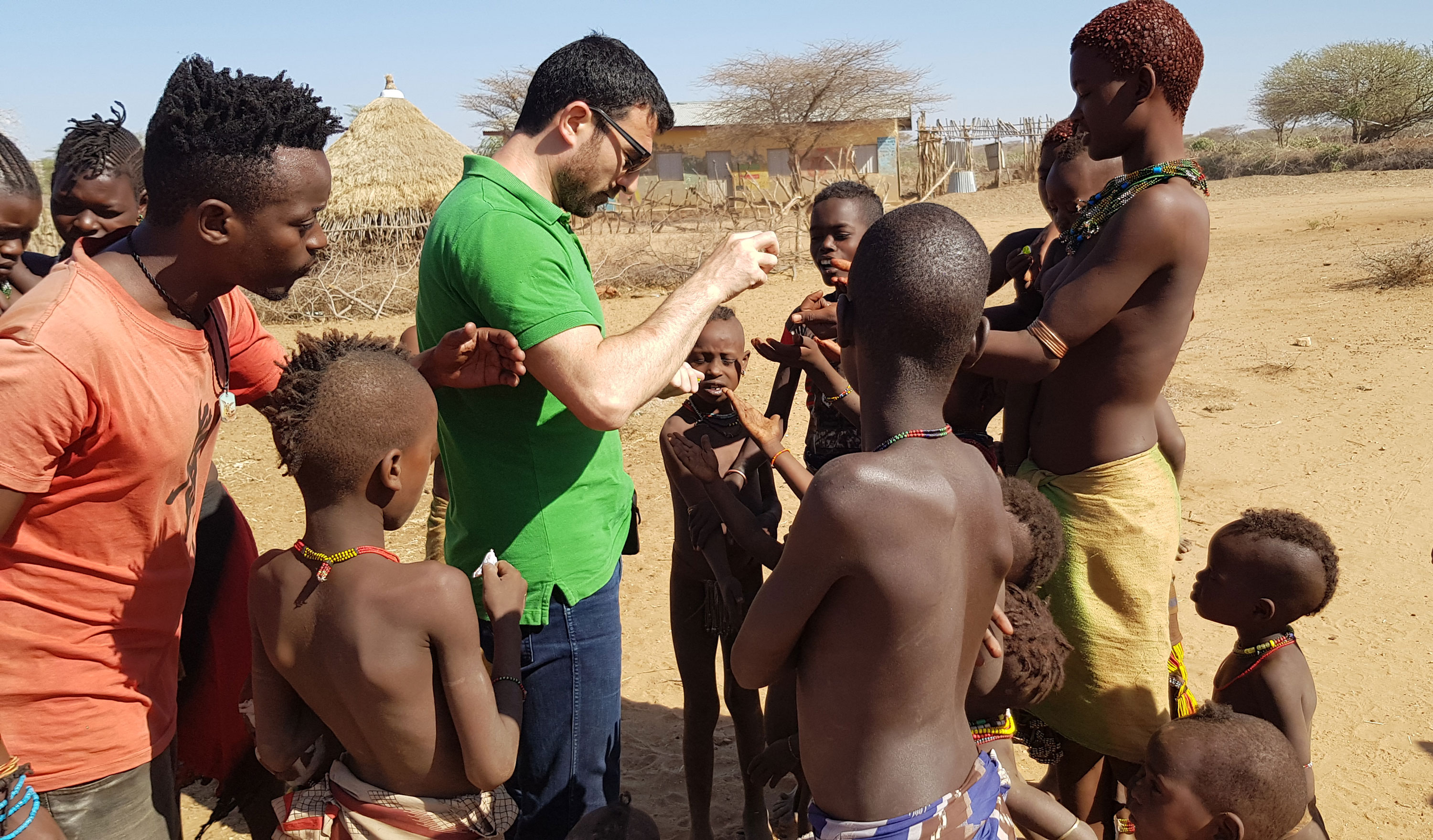
When we came to the village, there was a funeral, men went to the funeral, and there were only old people, very few women and small children left in the village. One young man stood guard at the entrance of the village with a machine gun in his hands. They were not allowed to go to the place of mourning. Foreigners are not allowed to go there either. Then we heard gunshots. They always lead the dead to the last apartment with the sounds of gunfire. Here I am distributing candy to children who are happy with our arrival.
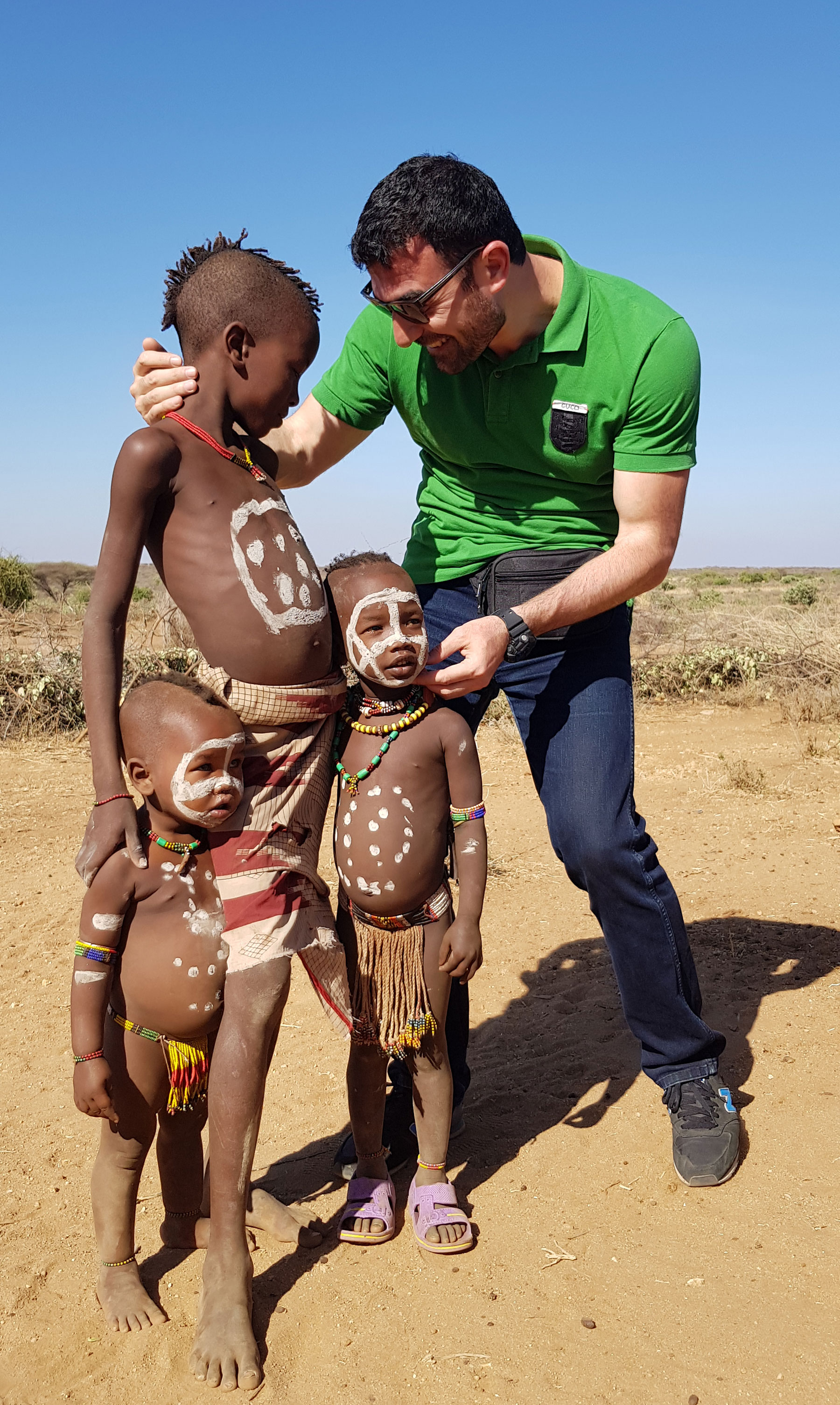
These three brothers were very cute, and their decorations were beautiful. Finally, I was able to make them laugh.
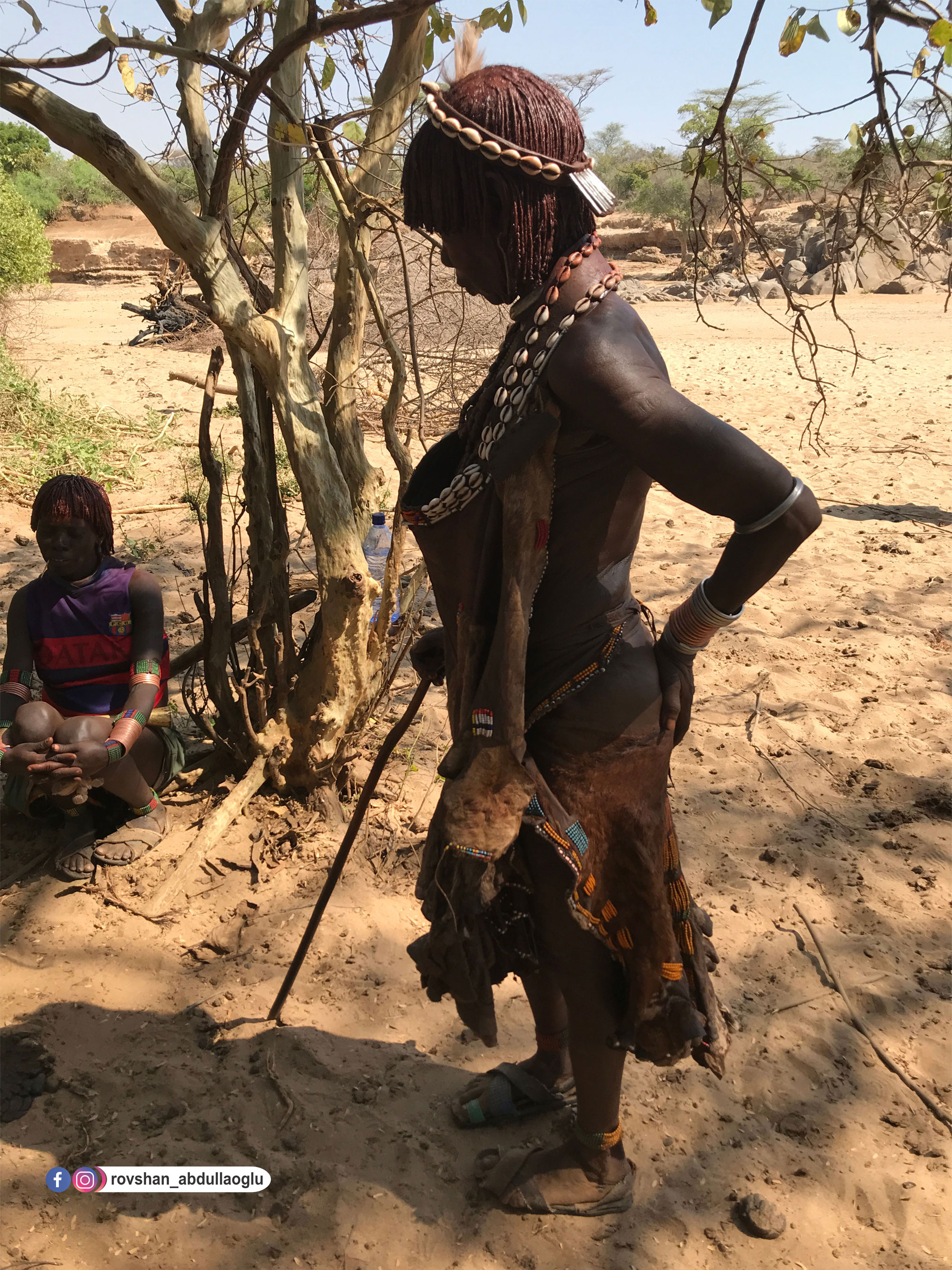
Polygamy is no foreign to the Hamar tribe. A Hamar man can marry several women, whereas a woman can marry only one man. The man must give the woman’s family a dowry. This amount is sometimes so big that they have to pay for a lifetime. Twenty cattle is already considered a very huge dowry. This great claim does not take into consideration living in primitive conditions. Man's greed knows no boundaries. The man puts on a special silver iron ring around the neck of the woman he is getting married to, something like our engagement ring. Then he grabs her by the ring and takes her home. A woman should wear this ring for the rest of her life. The reputation of the woman that a man marries first is superior to that of subsequent women. She can order them around. There is an iron ring around the first woman’s neck with a bulging knot. The second woman has two rings and the third has three rings. This is the first lady.
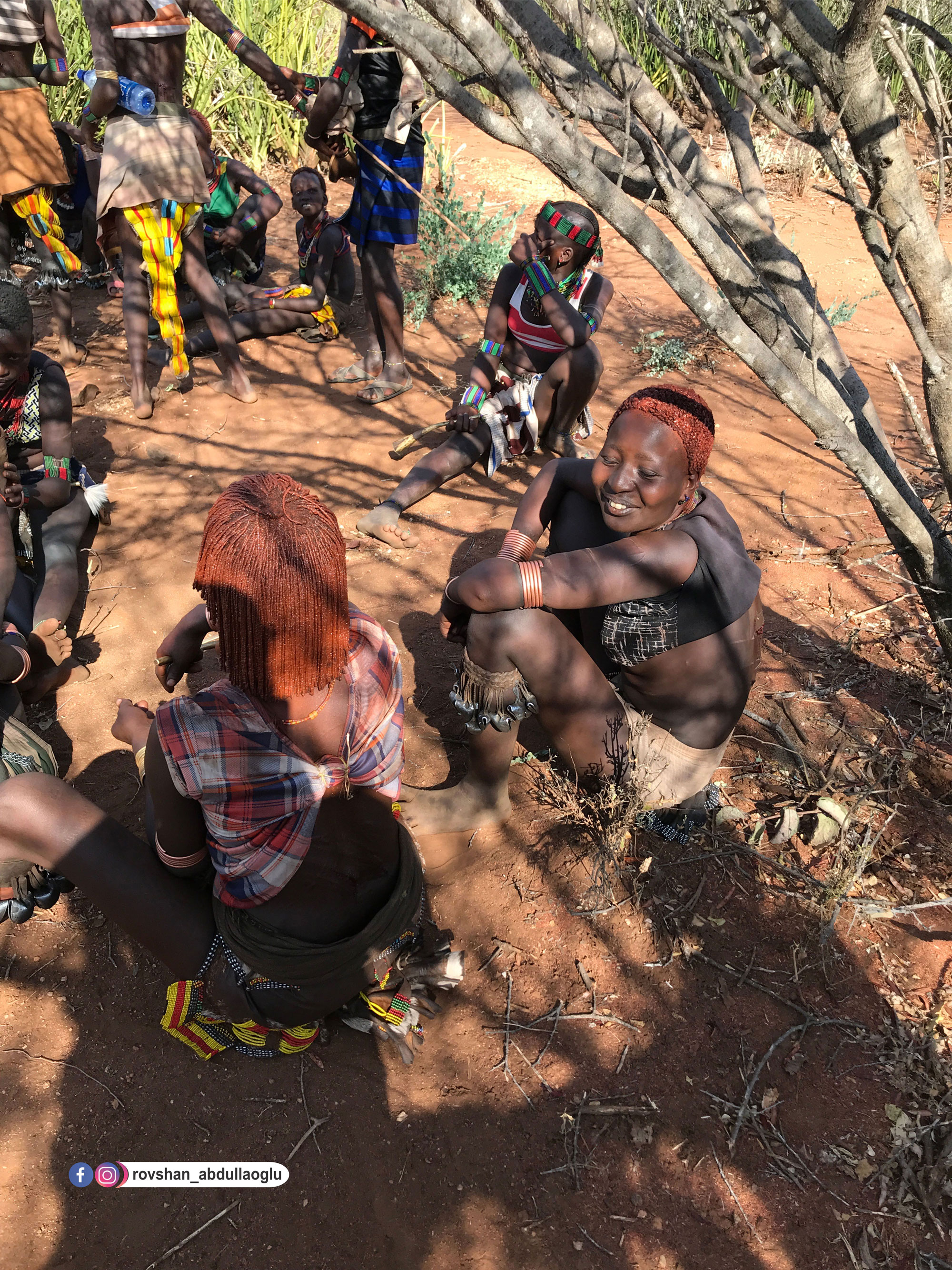
Elders have an authority in Hamar family. The marriage of a girl or even a boy depends on the head of the family. Family ties are strong in this tribe, and there is a lot of support. Women supply firewood and water in the village. The men work in the fields and graze the animals. When a man has several wives, they share the heavy household chores. That is why men try to marry several women. Men are not so attentive to their wives. Family communication is more in the form of men protecting their wives and working for the welfare of the family.

The Hamar tribe is distinguished by their unusual rituals. The "jumping over the bull" ritual, in which boys gain manhood by proving that they have grown up, is very popular. Only after successfully passing this test, the teenager may want to get married. Women are not without rituals either. They go through a special beating ritual to stabilize their love. I have prepared an extensive photo article about these two rituals. A Hamar woman from a bull jumping ceremony. Her back is scarred by the blows. She will proudly carry these scars in her future life.
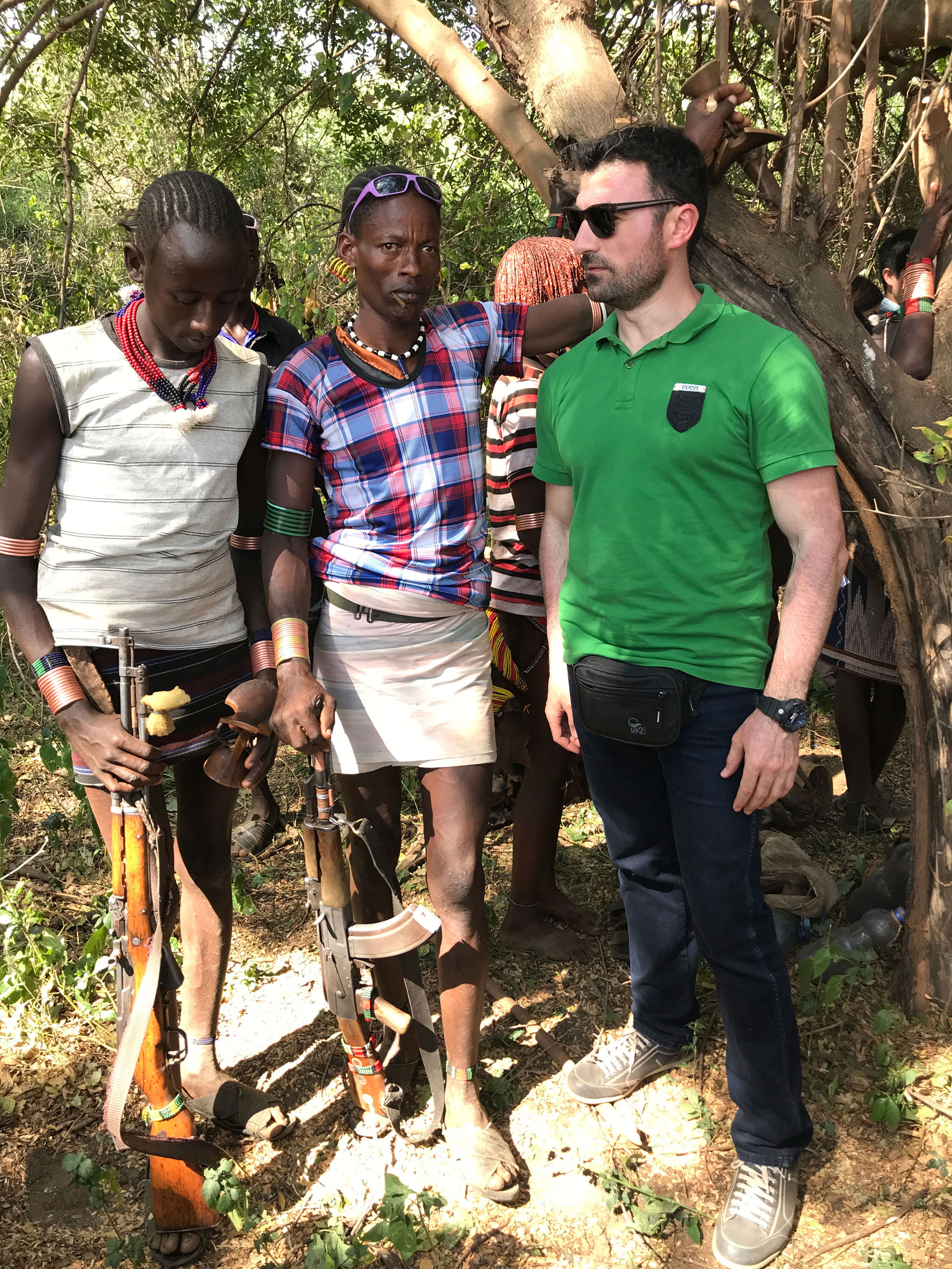
The young men of Hamar tribe armed with guns came to the ceremony of jumping over the bull. The person next to me has an extremely serious face. I joked a lot and showed some pictures on the phone and no matter how I tried, he it did not help. He did not laugh at all. Even when he saw himself in a camera that did not leave anyone there indifferent, his reaction was zero. The man next to him laughed but he did not.
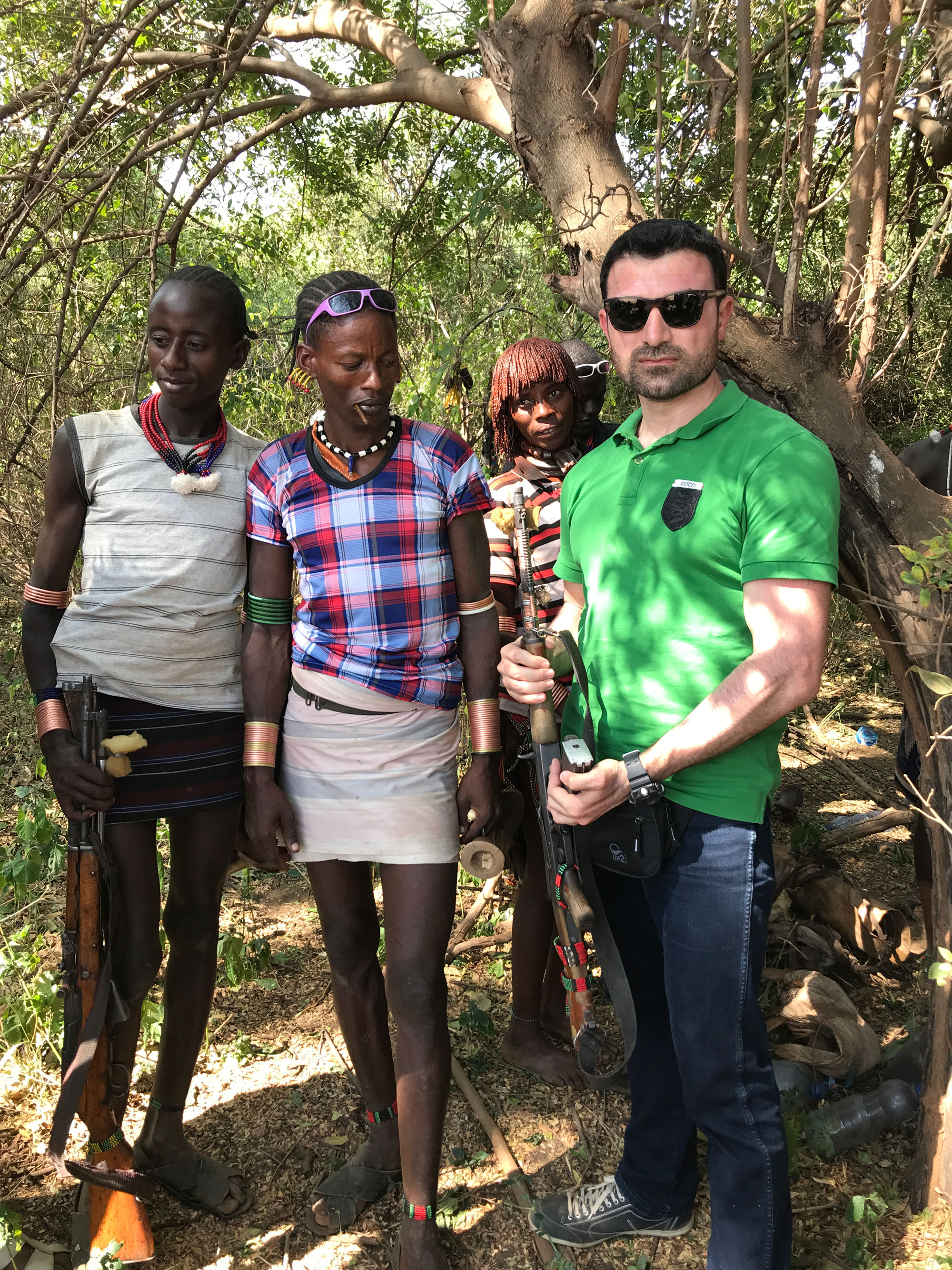
Here I have already taken his weapon from him. Reluctantly, he gave me the gun. Hamar men pay special attention to their glasses, decorated with pink flowers. They wear short skirts like women. They wear colorful earrings and necklaces too. Hamar people hold their lifestyles and traditions in high regard. When you look at them as primitive beings, when you ridicule their culture and rituals, you will inevitably make them furious and might have to face their anger.
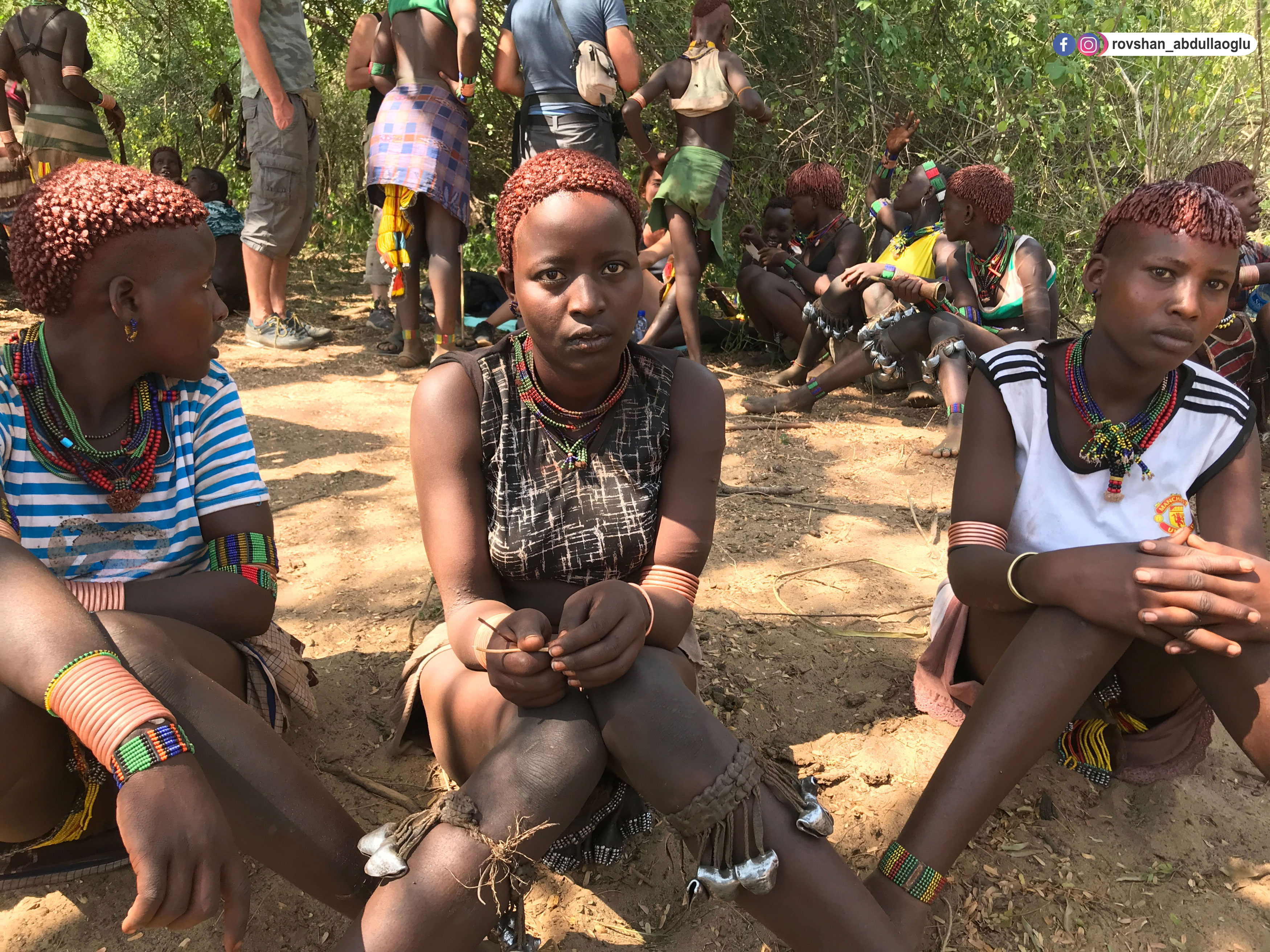
The Hamars can immediately get distinguished from the Mursi, Surma, and Konso tribes. The clothes, the hairstyle and the color of their skin are different, and more vivid. The Hamar women are considered to be the most beautiful among all the other African tribes. They also spend most of their time dressing up and pampering themselves. Hamars are unaware of the modern cosmetics industry. Therefore, they use clay, honey and eggs in their hairstyles. They put clay in their hair and braid it, and sometimes the clay they rub on their heads dries and takes the form of a hat. The various scars on their arms are also for decoration.
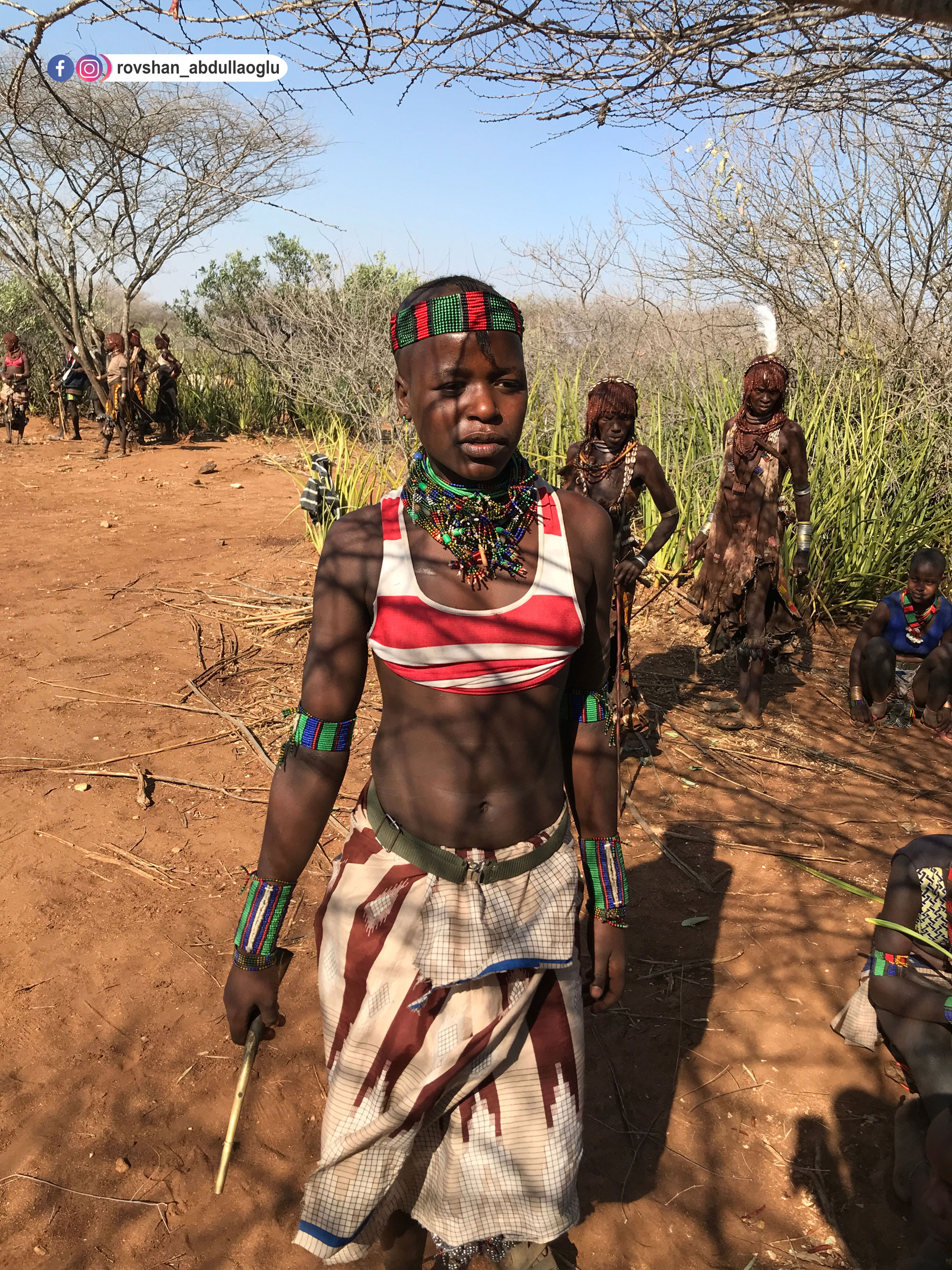
They rub a dark brown, red solution onto their bodies. During the day, they spend a lot of time massaging their skin with various ointments. Women massage each other with ointments. They also use honey during this procedure. The paste they rub on their bodies smell strange. They wear various ornaments on their arms, necks and legs. Everything in their hands can act as an ornament. This includes a jar lid, empty casings, feathers, goat skin, and so on.
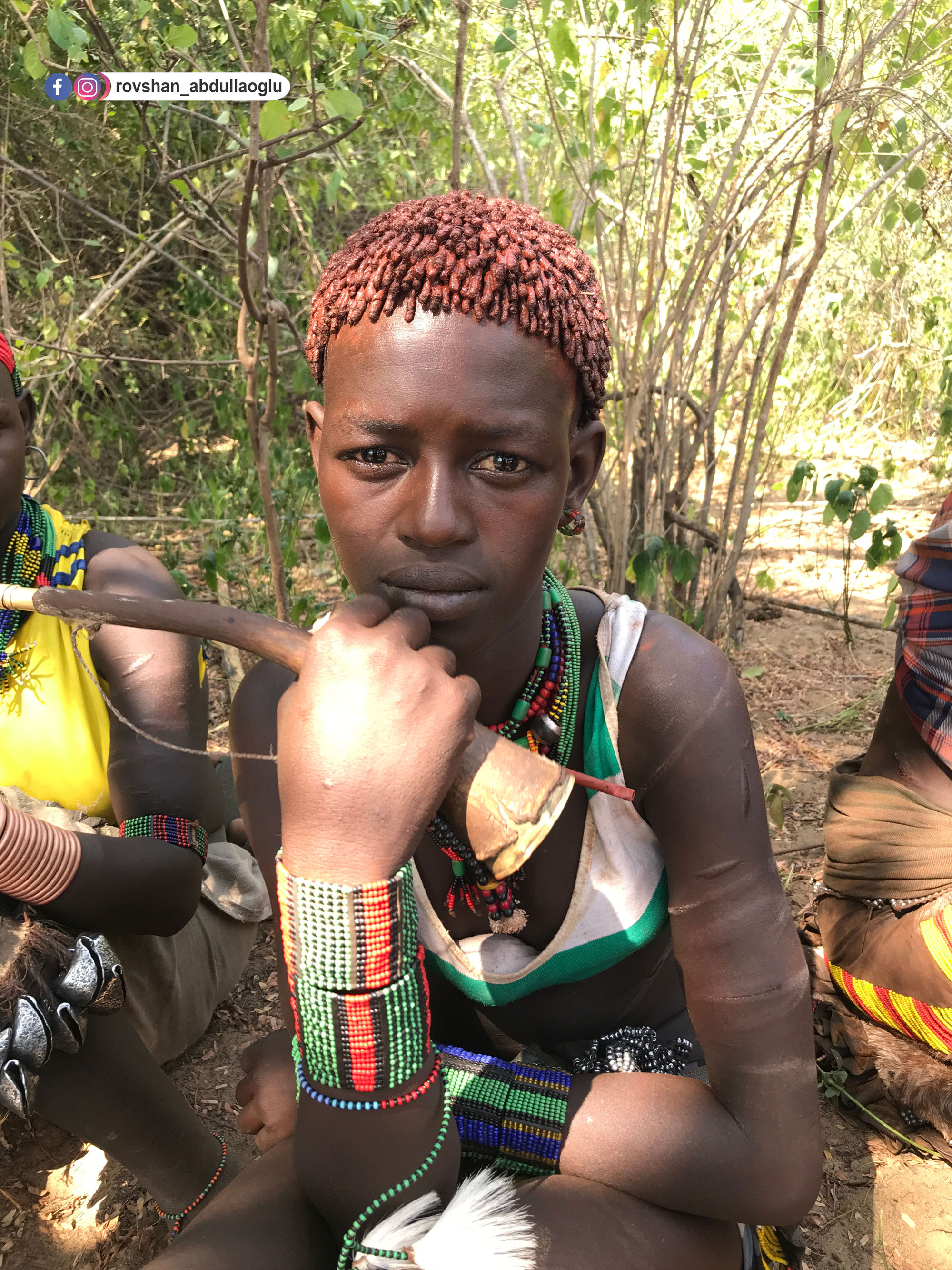
Traces of all the strange customs, environment, geography, different human psychology of the people to which she belongs to, can be seen and reflected in the picture of this Hamar lady. Sadness is the same in the language of all eyes. It's an award-winning image, I think. It is a trumpet made of bone in her hands. With such a trumpet they give various signals, thereby transmitting certain information.
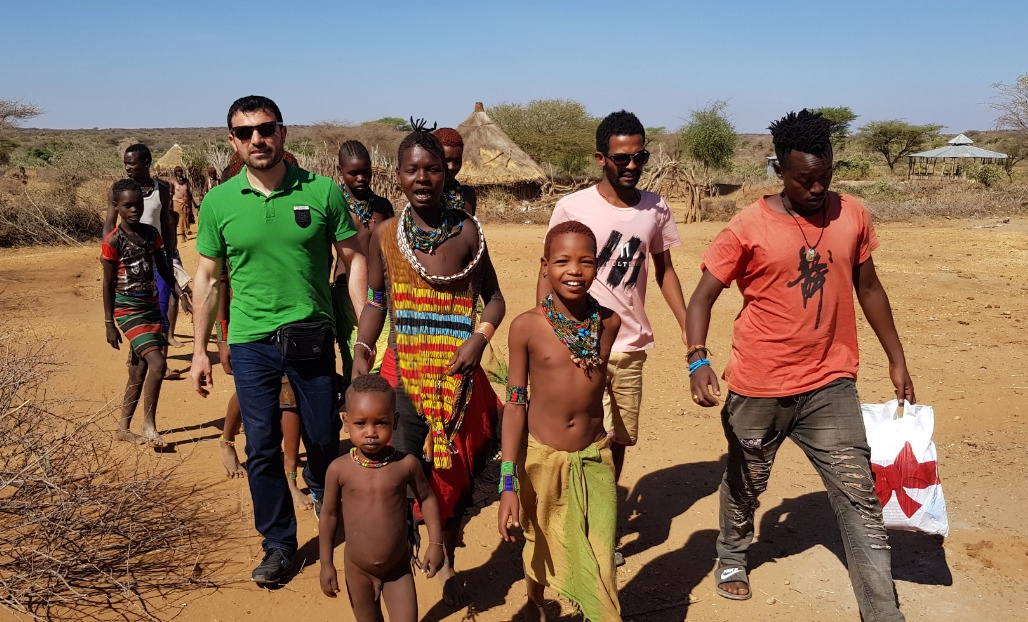
These children asked us to take them with us.
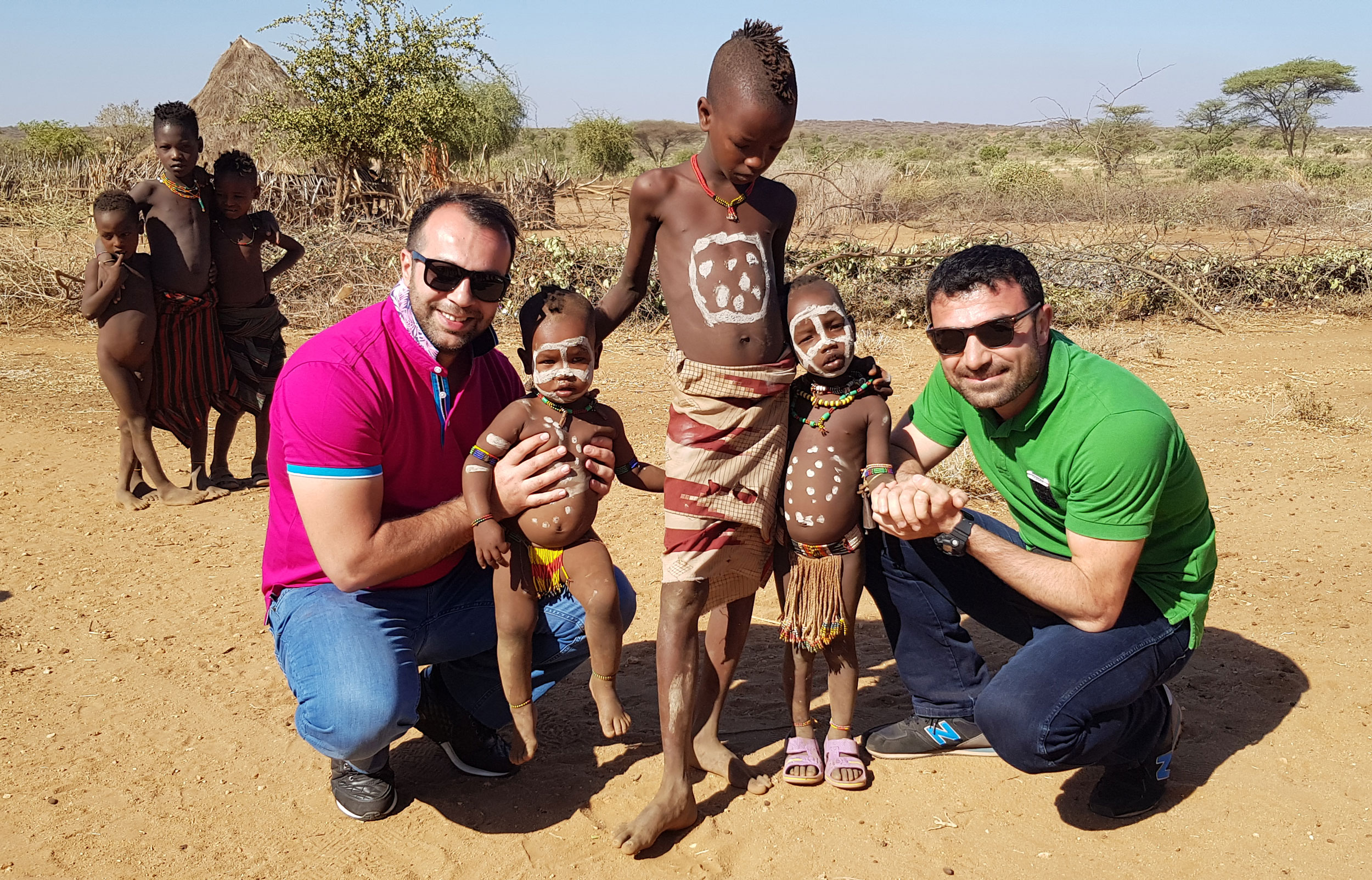
The Innocent children of Africa have become our most unforgettable memories.

When we were leaving the village, the villagers came to see us off. We parked our car on the outskirts of the village. They escorted us to the car.



























